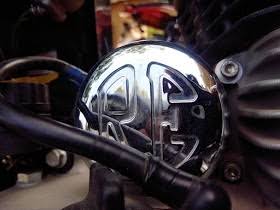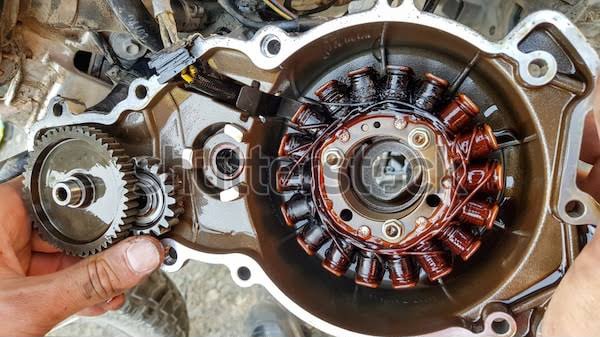How does the automobile electricals works?
The cars and bikes today have multiple numbers of electrical components. These components require electricity for working. The headlights, indicators, spark plugs, batteries and a number of other components essential for vehicle's performance are electric. The car's electrical system involves some brilliant applications of engineering. The technology behind most of these components may blow your mind. The automobile electrical system performs functions like electricity generation, electricity storage, electricity supply, AC to DC conversion etc. In this post, we will look at the various components of the automobile electrical system. So let's start with the wiring first.
The wire harness is a bunch of wires, used to supply current to different electrical components of the vehicle. All the wires are bunched together using tape or a protective covering. It runs all around the vehicle and different wire branches emerge from it, connecting all the electrical components of the vehicle.
For a component to work, it must be connected in circuit with the negative and the positive terminals of the battery. The positive terminal of the battery is connected to the electrical components through the wire harness. The negative terminal is connected to the chassis and it is called 'ground'. The chassis being an electrical conductor, acts as a large negative terminal. At any point, you can find the negative supply of battery by just connecting the components to the chassis. This is done to make the wiring simple. Using positive and negative wires would double the number of wires increasing the complexity of wiring.
The Alternators are used as the electricity generators in the automobiles. They convert the mechanical energy of engines into electrical energy. Earlier, DC current generators were used for this purpose. They generated DC current, which could directly be used to operate the electrical components. But they were bulky and generated less amount of power. With the invention of silicon-based rectifiers, the DC generators were replaced completely by alternators. The alternator produces energy through Faraday's Law Of Induction. This law states that 'Rotating a conducting
coil inside a magnetic field produces an oscillating current in the coil'. The alternator consists of a stator and a rotor. The stator is the stationary part and consists of copper windings. The rotor is the rotating part and consists of the magnet. The rotor is made by fitting magnet inside the flywheel. The stator is placed inside the rotor. The flywheel rotates with engine crankshaft producing a rotating magnetic field around the stator. This generates an electric current in the stator windings. This current is alternating in nature and is used for charging the battery and to run other electrical components of the vehicle.
They may either be a single unit as in two
or threee-wheelers or maybe two separate units as in car. The basic function of these components are:
1) Current Regulation
2) Current Rectification
The rectifier converts the AC current produced by the alternator into DC current. This DC is used to charge the battery and operate the DC components of the vehicles. The regulator, regulates the voltage of the current produced, with in safe limits. At higher engine rpm the alternator produces higher voltage. This high voltage may damage the electrical components of the vehicle. The regulator keep this voltage with in allowable limits.
Batteries are used in vehicles to power self motor, for starting the vehicle. Apart from this , they also power some other electrical components like horns, indicators etc. Most of the vehicles use 12 volt lead acid batteries. These batteries are cheap and maintenance free. When completely charged they power the DC electrical components of the vehicle. In case their voltage drops, they are charged by the alternator's current.
Spark plugs are the most important components of vehicle's ignition system.
They are used in SI or gasoline engines. They produce spark, which ignites the air-fuel mixture. The spark plug consists of a steel shell or covering. Inside the shell, lies a central electrode, a ground electrode is mounted on the top of the shell. Both these electrodes are made of nickel allows. The central electrode carries the high tension current from the ignition coil. It is insulated using porcelain all over it's surface, except the tip. The ground electrode mounted over the steel casing gets grounded when the spark plug is connected to the cylinder head. There lies a small gap between the naked tip of the central electrode and the ground electrode. The high tension current flowing in the central electrode ionizes the gases between the electrodes. This produces spark causing the air-fuel mixture inside the engine to ignite.
Ignition Coil
Ignition coil is a mini transformer used to step-up the voltage before supplying it to the spark plug. It consists of a soft iron core ,over which insulated primary and secondary coils are wound. The coils are properly insulated from each other. Primary coils are kept out side while the secondary coils lie inside. This is done because the primary coils produce a lot of heat. The primary coil is made of ticker wire and have 100-150 turns. The secondary coil is made from thinner wire and may have 15000 to 20000 turns. When a current pulse is supplied to the primary coil, it introduces a high voltage current pulse in the secondary coil. The voltage in secondary coils may step-up to thousands times that of the primary coil. This voltage when supplied to the spark plug, creates spark at the electrode tip.
Starter motor is the essential component of vehicle starting system. It is a DC motor and draws it's current from the battery. It's one terminal is connected to the positive terminal of the battery and other is grounded to the chassis. When we press the power start button, the current is supplied to the motor. This current rotates the motor, which helps in cranking the engine.
Fuses are used to prevent sort-circuit in wire harness. In case any wire get naked and and come in contact with chassis i.e. earth the wire may get sort circuited. This may damage the wire by drawing huge amount of current. To prevent this sort-circuiting, fuses are used. Since there are many wires, many fuses are used. These fuses.
So friends, this was a brief description of some of the components of automobile electrical system. Hope, you enjoyed it. Please share your feedback in the comment section below.
Starter Motor
 |
| Starter Motor |
Starter motor is the essential component of vehicle starting system. It is a DC motor and draws it's current from the battery. It's one terminal is connected to the positive terminal of the battery and other is grounded to the chassis. When we press the power start button, the current is supplied to the motor. This current rotates the motor, which helps in cranking the engine.
Relays And Fuses
Relays are switches which can be operated using small current pulses. They are used to operate those electrical components which draw huge amount of current. These equipments need thick cables to carry that huge current. The switches of these components lie on handles. If these components are to be controlled using normal switches, their thick cables need to be carried to the handles. Now, this will cause very much inconvenience in turning the handles. So these high current equipments are operated using relays, which in turn are operated by the normal switches located in handle area. They relays themselves need a small current for operation, hence thin wires are required to be carried to the handles. The relays are used to operate equipments like starter motors, wipers, head lights, horns etc.Fuses are used to prevent sort-circuit in wire harness. In case any wire get naked and and come in contact with chassis i.e. earth the wire may get sort circuited. This may damage the wire by drawing huge amount of current. To prevent this sort-circuiting, fuses are used. Since there are many wires, many fuses are used. These fuses.
So friends, this was a brief description of some of the components of automobile electrical system. Hope, you enjoyed it. Please share your feedback in the comment section below.















Leave a Comment